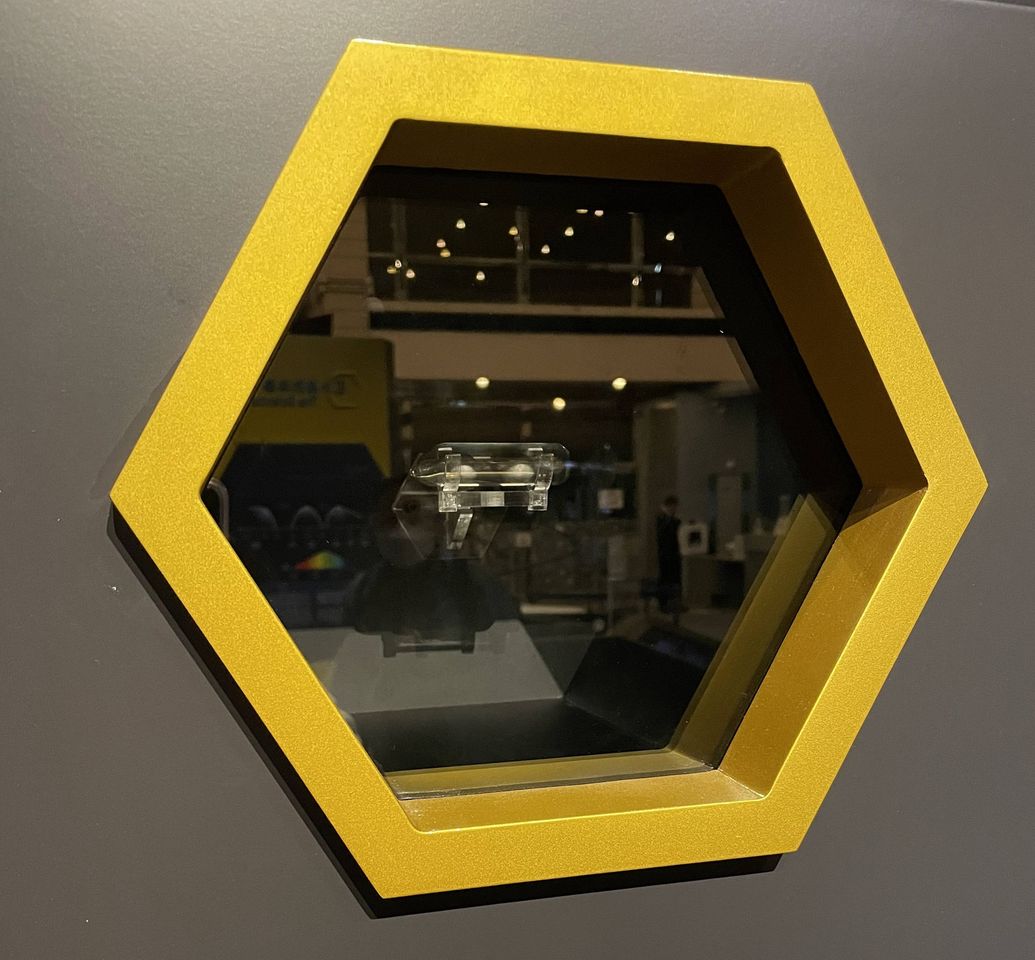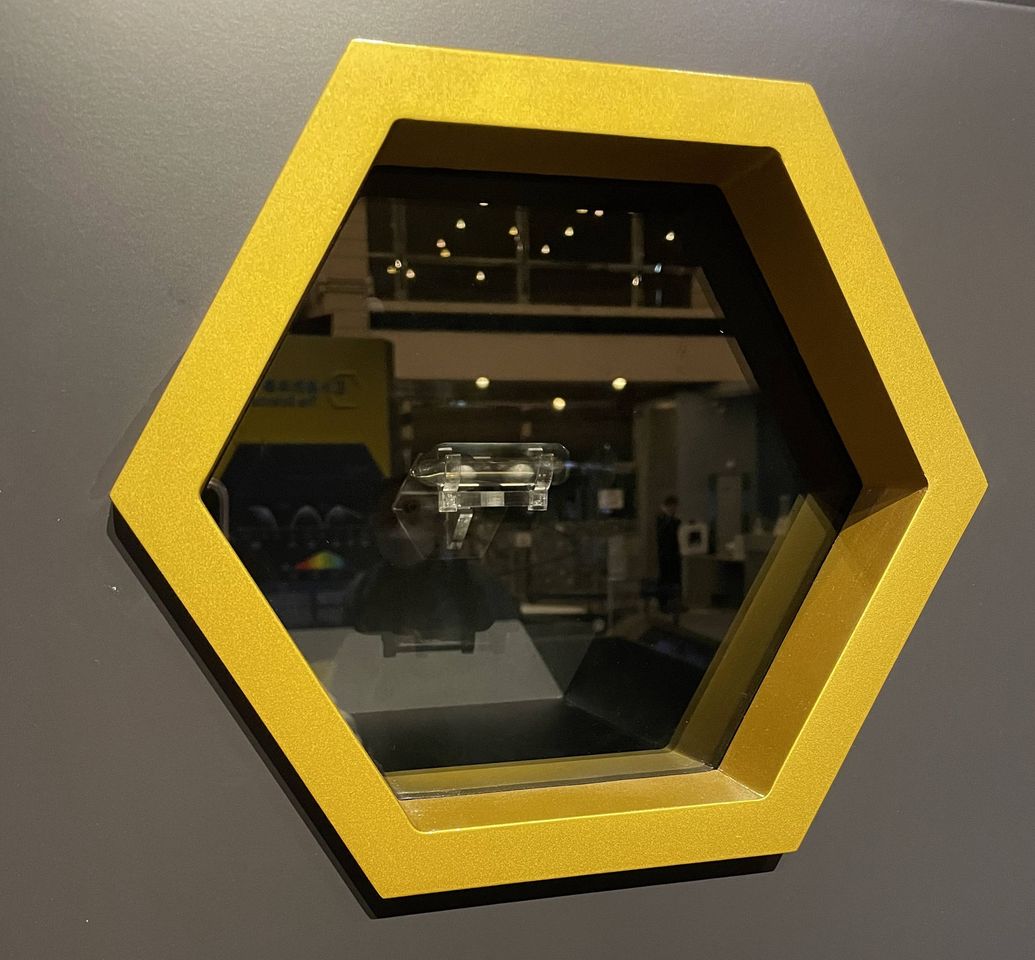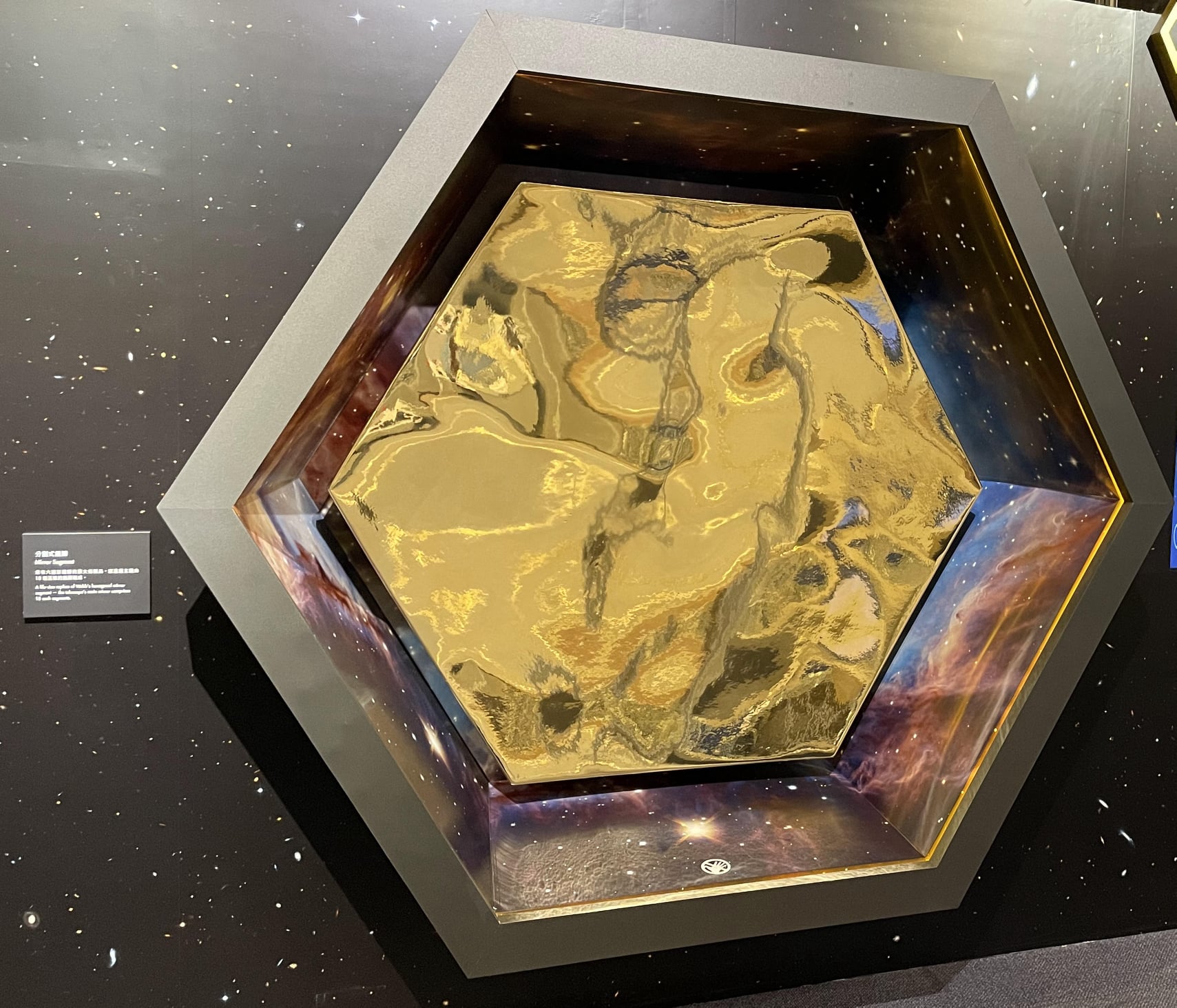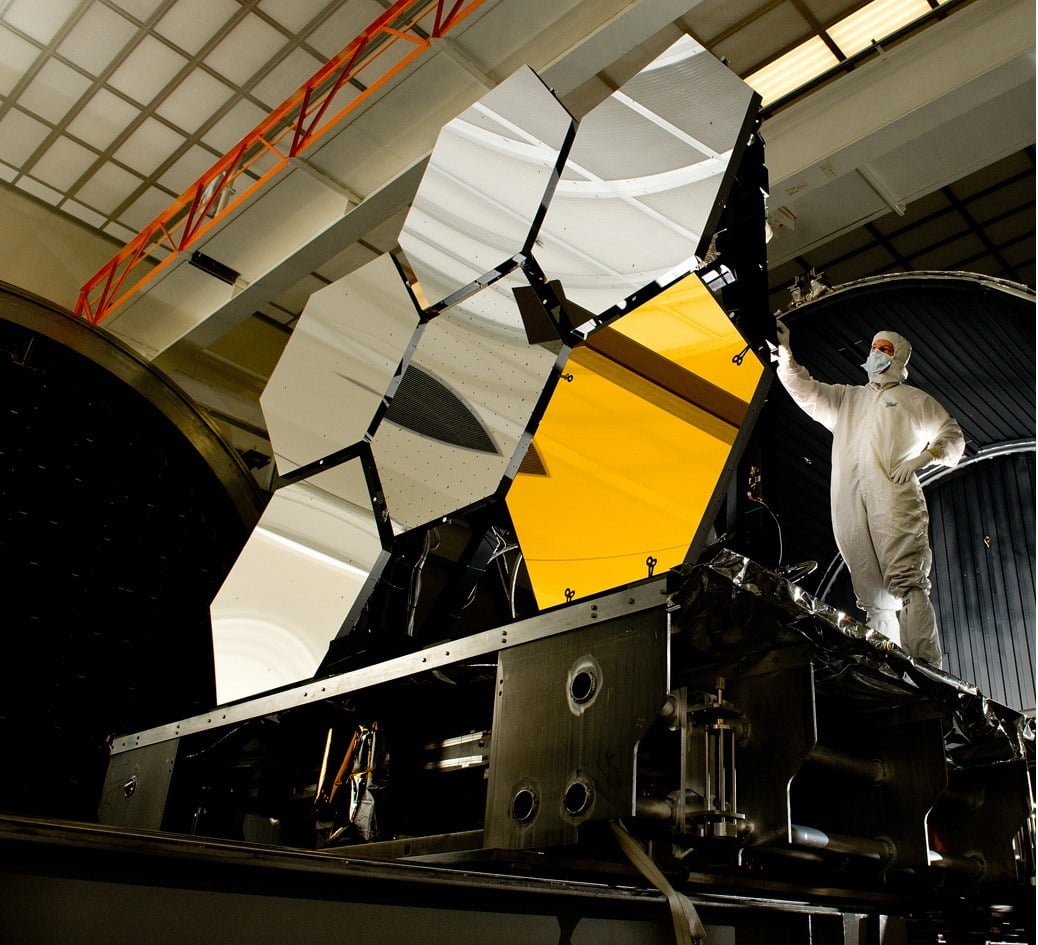Are you one of the fans of "mirror"? Don't get me wrong, the mirror I'm talking refers to the mirror of the James Webb Space Telescope, which is the major part of the "Golden Eye on the Cosmos" special exhibition of Space Museum.
Webb is the largest telescope ever sent to space. Webb's primary mirror has a diameter of 6.5 metres and is composed of 18 individual hexagonal segments. The surfaces of mirror segments are exquisitely smooth, with an average roughness of only 20 nm, which is around 1/5,000 the diameter of a human hair.
These mirror segments are designed in a shape of a beehive hexagon as the hexagon can facilitate a gapless connection between neighbouring components. There are 6 actuators under each segment, which adjust the mirror's curvature with an accuracy of 10 nm to achieve a perfect focus. In order to fit in the rocket to send to space, the primary mirror is foldable and unfold and deploy when in space.
The mirror has to withstand huge temperature differences and impacts of micrometeorites out there in space. Engineers chose beryllium (symbol Be, the 4th element in periodic table) to make the primary mirror since it has a comparatively low density, but it is very rigid and can maintain its shape under a huge temperature range.
The beryllium used to construct Webb's mirror came from the Spor Mountain mining area in Utah, USA. Most beryllium is found within minerals such as beryl that formed as lava cooled after a volcanic eruption 25 million years ago.






